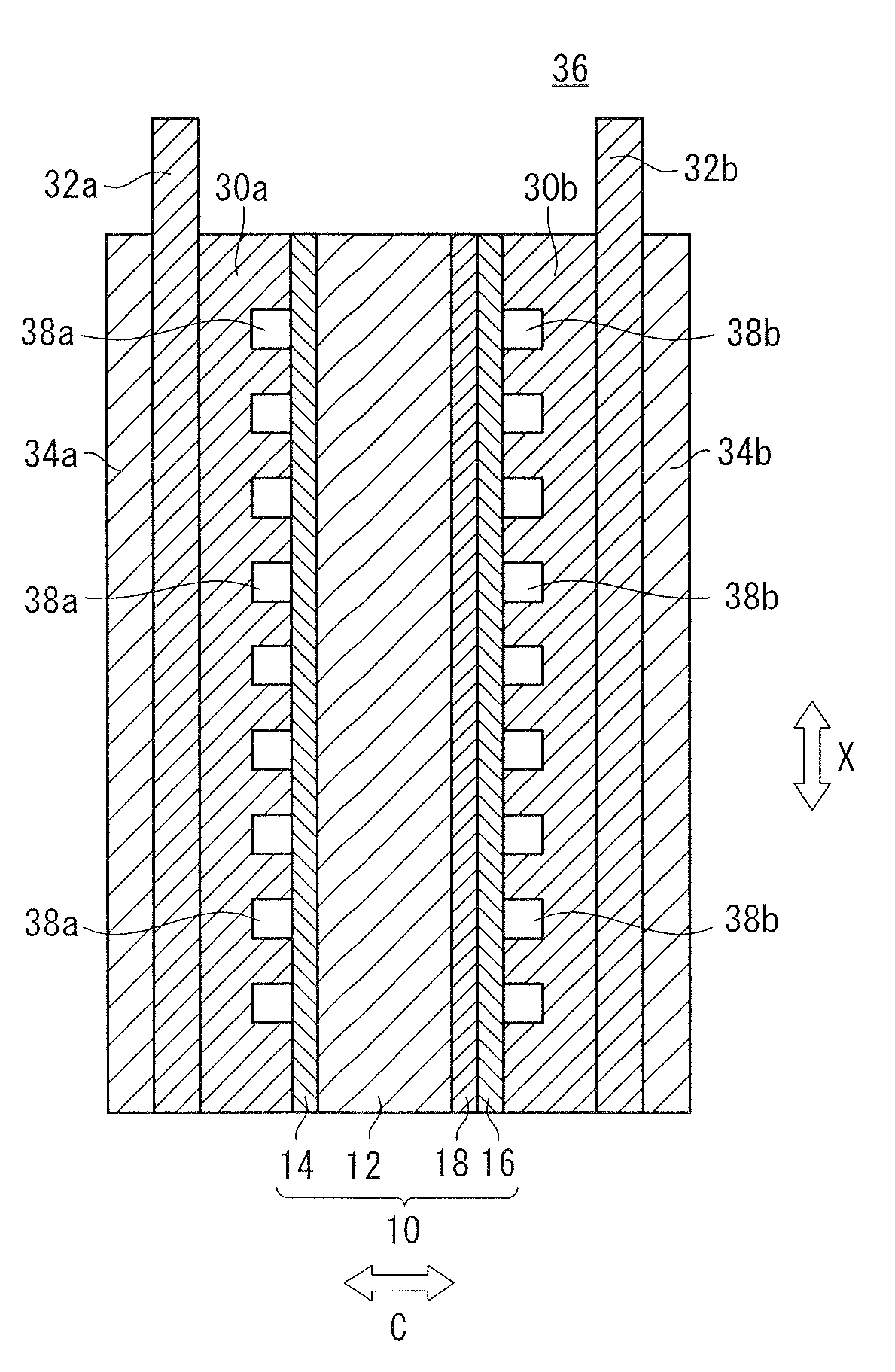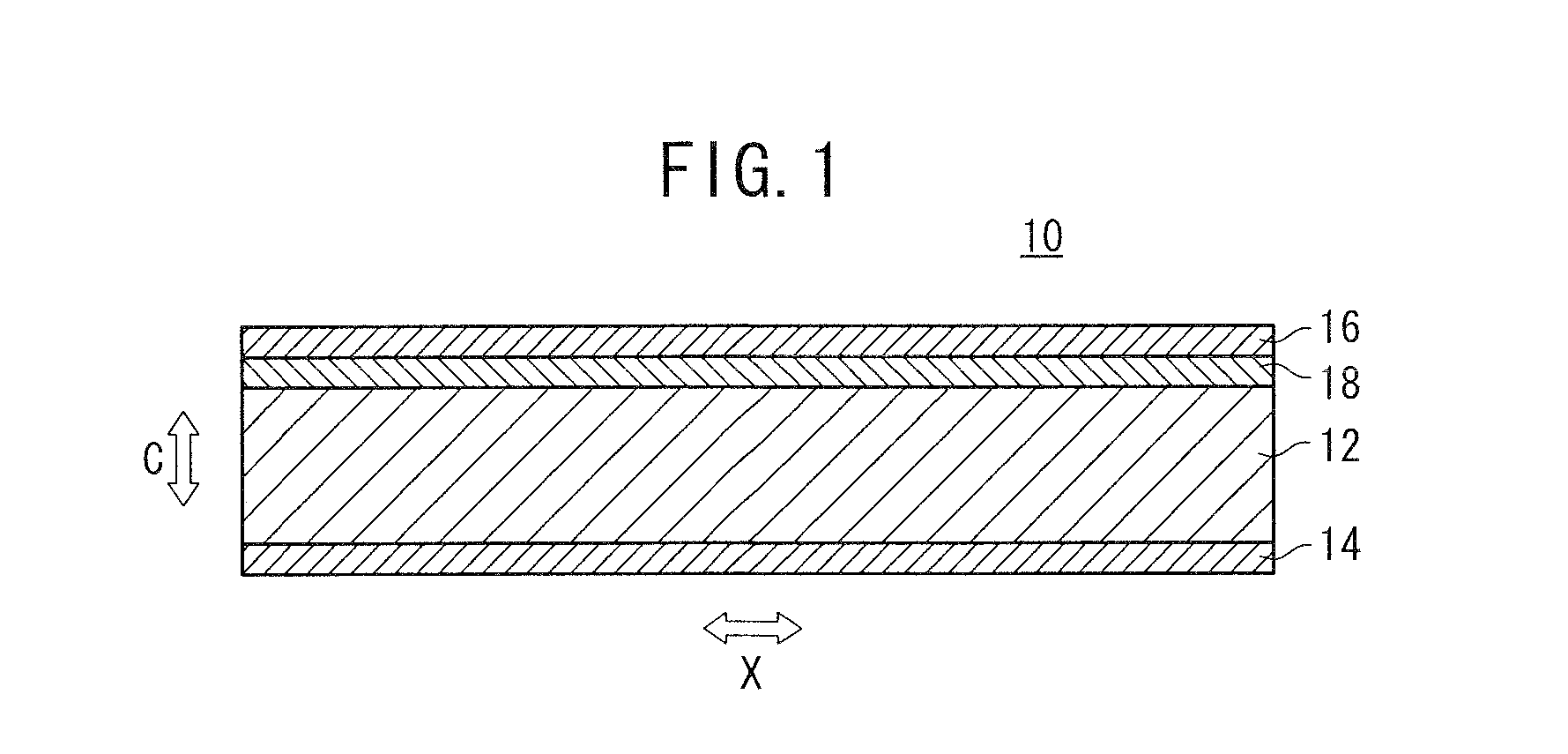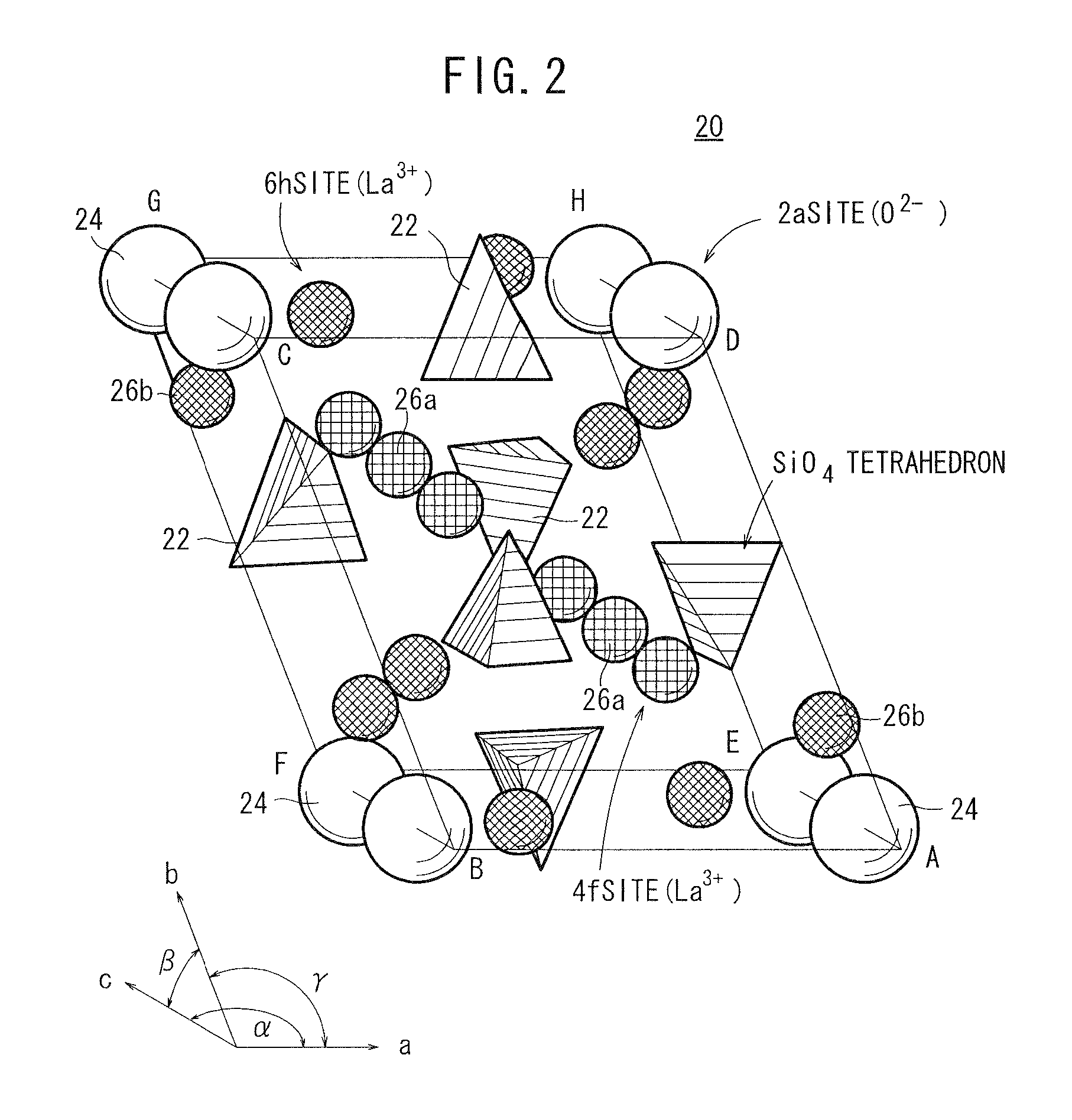Free-standing membrane electrolyte electrode assembly
a free-standing, electrolyte-electrode technology, applied in the manufacture of final products, cell components, electrochemical generators, etc., can solve the problems of deteriorating fuel cell power generation, electrolyte cracking, reaction gas cannot be readily diffused on the electrodes in the fuel cell, etc., to achieve sufficient power generation characteristics, shorten the time, and the effect of sufficient conductivity
- Summary
- Abstract
- Description
- Claims
- Application Information
AI Technical Summary
Benefits of technology
Problems solved by technology
Method used
Image
Examples
examples
[0077]A monocrystal of an apatite compound La9.33Si6O26, oriented in the c-axis direction, was prepared by the Czochralski method. The monocrystal was mirror-polished into a disc having a diameter of 30 mm and a thickness of 300 μm (size in the thickness direction parallel to the c-axis direction). Then, a 200 nm thick SDC layer was formed on each surface of the disc by sputtering. The resultant disc was subjected to heat treatment at 1350° C. for 2 hours in air.
[0078]A paste of Ni-SDC was applied to the surface of one of the SDC (Sm0.2Ce0.8O1.9) layers by screen printing, and subjected to a heat treatment at 1350° C. for 4 hours in air, so as to form an Ni-SDC (Sm0.2Ce0.8O1.9) layer. In the paste, the weight ratio between Ni and SDC was 50:50.
[0079]A paste of Ba0.5Sr0.5Co0.8Fe0.2O3 was applied to the surface of the other SDC layer by screen printing, and subjected to a heat treatment at 800° C. for 4 hours in air, in order to form a Ba0.5Sr0.5Co0.8Fe0.2O3 layer.
[0080]The ESC of Exa...
PUM
| Property | Measurement | Unit |
|---|---|---|
| thickness | aaaaa | aaaaa |
| total thickness | aaaaa | aaaaa |
| thickness | aaaaa | aaaaa |
Abstract
Description
Claims
Application Information
 Login to view more
Login to view more - R&D Engineer
- R&D Manager
- IP Professional
- Industry Leading Data Capabilities
- Powerful AI technology
- Patent DNA Extraction
Browse by: Latest US Patents, China's latest patents, Technical Efficacy Thesaurus, Application Domain, Technology Topic.
© 2024 PatSnap. All rights reserved.Legal|Privacy policy|Modern Slavery Act Transparency Statement|Sitemap



